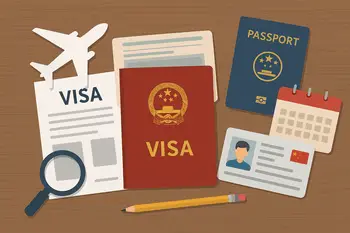
Workplace disputes are an inevitable part of any professional environment.
In China, the rapid economic growth and evolving labor regulations have significantly shaped how these disputes are managed and resolved.
Understanding the mechanisms for resolving workplace disputes is essential for both employers and employees to ensure a fair and harmonious work environment.
This guide explores the common types of workplace disputes, the resolution process, challenges, and practical tips for managing conflicts in China.
It also includes references to relevant laws and cultural considerations to provide a well-rounded perspective.
Common Types of Workplace Disputes in China
Workplace disputes in China can arise from a variety of issues.
Below are the most common types:
- Wage and Compensation Disputes
Disagreements over salary payments, overtime pay, bonuses, and other forms of compensation are frequent. For example, disputes may arise when employers fail to pay wages on time or when employees claim unpaid overtime.
Relevant Law: Article 50 of the Labor Contract Law of the People’s Republic of China mandates timely and full payment of wages. - Contract Disputes
Issues related to employment contracts, such as unclear terms, contract duration, job responsibilities, or termination conditions, are common. For instance, disputes may occur if an employer terminates a contract without proper notice or compensation.
Relevant Law: The Labor Contract Law requires written contracts and specifies conditions for termination. - Working Hours and Overtime Disputes
Conflicts regarding excessive working hours, unpaid overtime, or insufficient rest periods are prevalent, especially in industries like manufacturing and tech.
Relevant Law: The Labor Law of the People’s Republic of China sets the standard workweek at 40 hours and requires overtime pay for additional hours. - Discrimination and Harassment
Cases involving workplace discrimination or harassment based on gender, age, race, or other factors are increasingly reported. For example, women may face discrimination during hiring or promotion processes.
Relevant Law: The Employment Promotion Law prohibits discrimination in employment. - Health and Safety Concerns
Disputes related to unsafe working conditions or violations of health regulations are common, particularly in high-risk industries like construction.
Relevant Law: The Work Safety Law requires employers to provide safe working environments. - Termination and Severance Pay Disputes
Disagreements over the legality of terminations and the calculation of severance pay are frequent. For example, disputes may arise if an employer dismisses an employee without just cause.
Relevant Law: The Labor Contract Law outlines severance pay requirements based on the length of service.
Resolution Mechanisms for Workplace Disputes
China’s labor law provides several mechanisms for resolving workplace disputes.
These mechanisms ensure that both employers and employees have access to fair and just processes.
1. Negotiation
- Description: The first step in resolving a dispute typically involves direct negotiation between the employer and the employee. Both parties discuss the issue and attempt to reach a mutually acceptable agreement.
- Benefits: Negotiation is quick, cost-effective, and helps preserve the working relationship.
- Challenges: Power imbalances may hinder fair outcomes, especially for employees.
2. Mediation
- Description: If negotiation fails, the dispute can be referred to mediation. A neutral third-party mediator facilitates discussions to help both parties reach a voluntary agreement.
- Benefits: Mediation is confidential, encourages open communication, and is less adversarial than formal processes.
- Challenges: Mediation outcomes are not legally binding, which may limit enforceability.
- External Resource: China International Economic and Trade Arbitration Commission (CIETAC)
3. Arbitration
- Description: When mediation is unsuccessful, the dispute can be escalated to labor arbitration. An arbitration committee, typically composed of representatives from the employer, employee, and government, reviews the case and issues a binding decision.
- Benefits: Arbitration is formal, impartial, and legally binding.
- Challenges: The process can be time-consuming, and appeals are limited.
- Relevant Law: The Labor Dispute Mediation and Arbitration Law governs arbitration procedures.
4. Litigation
- Description: As a last resort, disputes can be taken to court. Both parties present their case before a judge, who issues a binding judgment.
- Benefits: Litigation provides a definitive legal resolution and ensures compliance with labor laws.
- Challenges: Litigation is costly, time-intensive, and may strain relationships.
- External Resource: Supreme People’s Court of China
Challenges in Workplace Dispute Resolution
While the resolution mechanisms are robust, several challenges persist:
- Delays in Arbitration and Litigation: Cases can take months or even years to resolve, especially in overburdened regions.
- Enforcement Issues: Even after a decision is made, enforcing it can be difficult if the employer is uncooperative.
- Cultural Factors: The importance of “face” (mianzi) and hierarchical relationships may discourage employees from pursuing formal complaints.
- Regional Variations: Labor law enforcement can vary significantly across provinces, with some regions being more employee-friendly than others.
Tips for Managing Workplace Disputes
To effectively manage workplace disputes, both employers and employees should adopt proactive and transparent practices:
- Clear Communication: Maintain open communication channels to address issues promptly and prevent misunderstandings.
- Document Everything: Keep detailed records of employment contracts, wage payments, working hours, and any incidents that may lead to disputes.
- Understand Labor Laws: Familiarize yourself with Chinese labor laws to ensure compliance and protect your rights.
- External Resource: China Labor Bulletin provides updates on labor laws and worker rights.
- Seek Professional Advice: Consult with legal or HR professionals for guidance on dispute resolution and compliance.
- Promote a Positive Work Environment: Foster a culture of respect, inclusivity, and fairness to minimize conflicts.
- Preventative Measures: Conduct regular training on labor laws and conflict resolution to prevent disputes from arising.
Conclusion
Workplace disputes are a natural part of any professional environment, but understanding the resolution mechanisms in China can help ensure fair and just outcomes.
By familiarizing yourself with the types of disputes, resolution processes, and practical tips, both employers and employees can navigate conflicts effectively.
Whether through negotiation, mediation, arbitration, or litigation, the goal is to achieve a resolution that upholds the rights and interests of all parties involved.
For further guidance, consult legal professionals or explore resources like the China Labor Bulletin and the Supreme People’s Court of China.
By taking a proactive approach and fostering a positive work environment, workplace disputes can be managed effectively, contributing to a harmonious and productive workplace.


